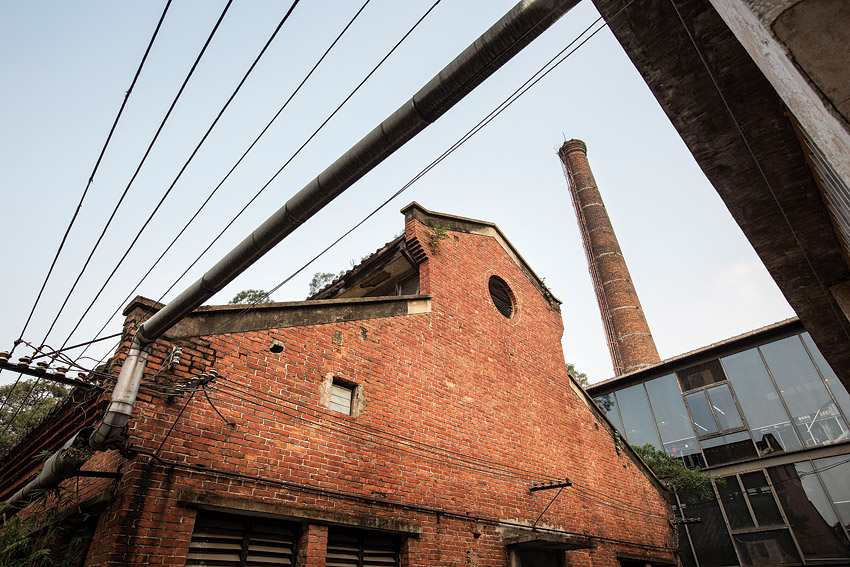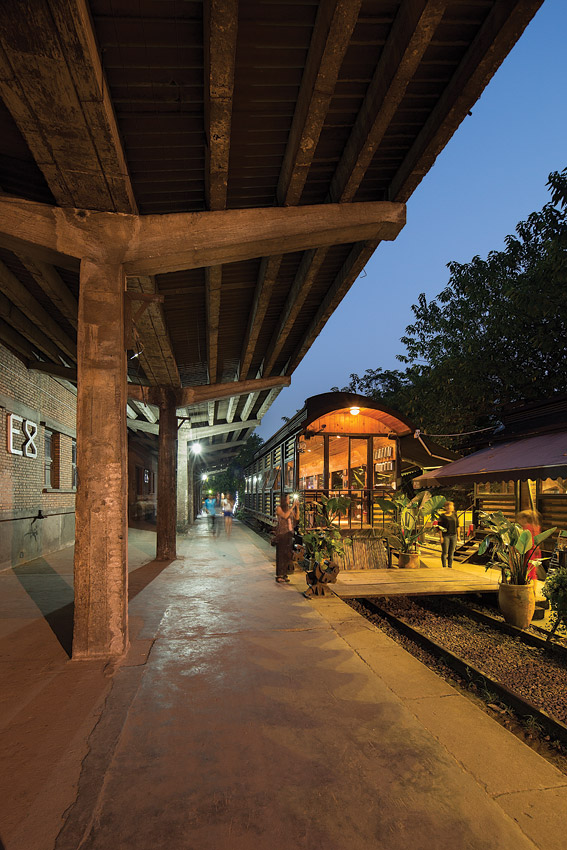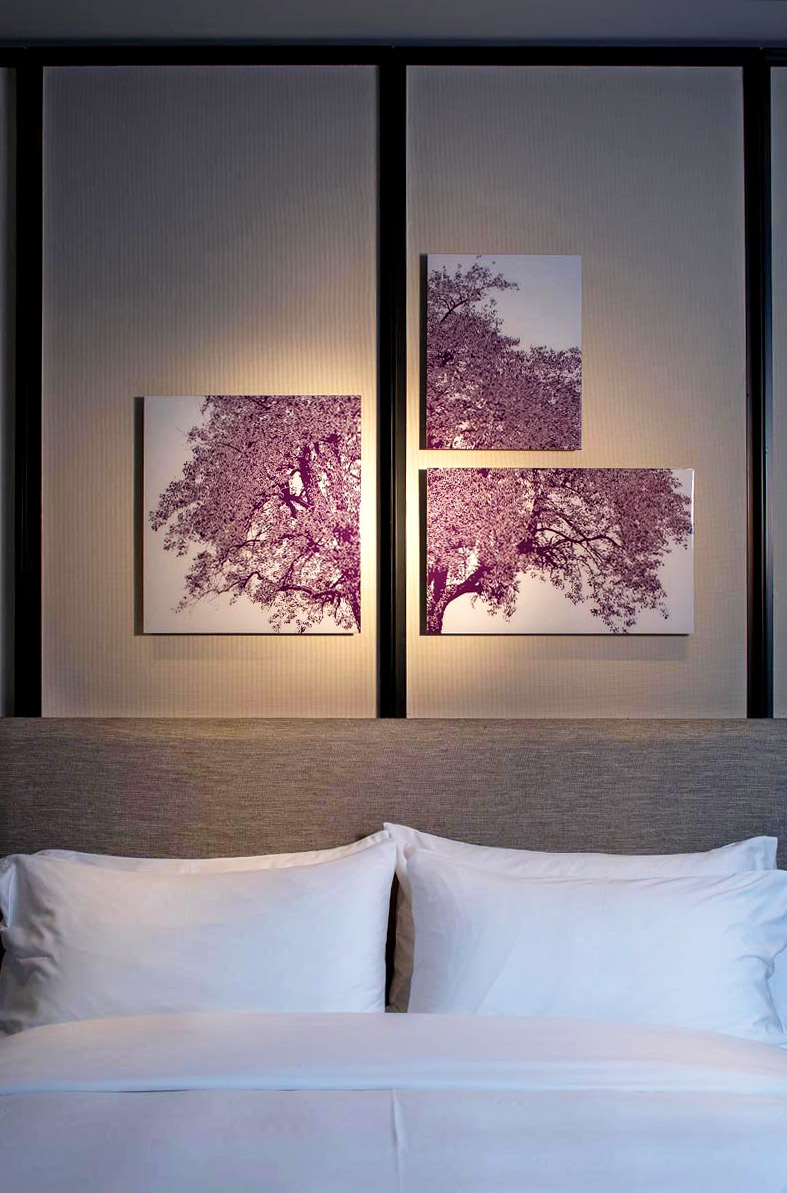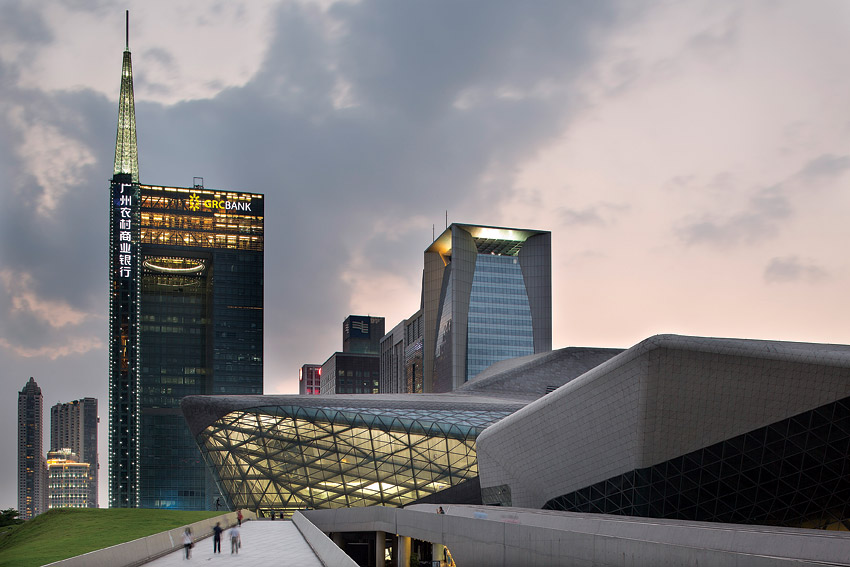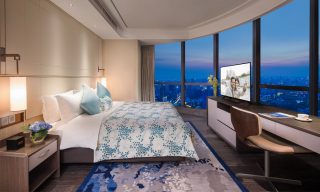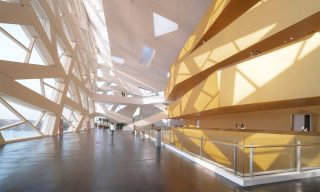Yet still Guangzhou’s skyline continues to grow: under construction is the 530-meter CTF Guangzhou tower, a near twin to the IFC. But the loftiest spot in town is reserved for the now iconic Canton Tower. The slim, twisting structure, dubbed Xiao Man Yao—“slender-waisted girl”—by locals, soars 600 meters over the district and is illuminated in rainbow-colored stripes after dark.
On the tower’s 112th floor, the aptly named Cloud Star Bar debuted in July as Guangzhou’s highest cocktail aerie. The latest in a sophisticated assortment of new lounging destinations, it boasts stunning nighttime views over the city and the Pearl River from its bar and alfresco terrace. The fact that you can sip your martini as the glowing orbs of a tower-top Ferris wheel spin past makes the experience even more surreal.
Less altitudinous but equally attractive is Fei Ultralounge at the months-old W Guang-zhou. A three-story “cocktail cube” designed by Tokyo firm A.N.D., the nightclub attracts a mix of local hipsters, celebrities, and hotel guests. On the night I visited, a Russian DJ was on the deck.
“It has become decidedly cosmopolitan,” said Andy Corless, creative director of local lifestyle magazine In the Red, of the city’s fast-evolving nightlife scene. “Papa Club, Guangzhou’s most prominent gay bar, is a good example of this development—very New York.” Another waterside development is the Party Pier, a strip of bars and Chinese and international restaurants on the banks of the Pearl River near the Canton Tower. Here, People’s Café is a thumping weekend partying spot for local revelers, with live music and a regular lineup of events.
Guangzhou’s newfound edginess is reviving its older districts, too. The heart of the city’s thriving contemporary arts scene is Redtory, a collection of galleries, studios, and relaxed cafés occupying the low-slung buildings of the former Guangdong Canned Food Factory. Beyond the slightly grim factory exteriors, galleries such as the Hong Kong Contemporary Art Museum and Redtory Art Centre showcase cutting-edge exhibitions against a backdrop of raw brickwork, protruding smokestacks, and antiquated industrial equipment. C4 Gallery, one of the area’s most innovative spaces, recently hosted exhibitions ranging from a Picasso retrospective to works by the late Wu Guanzhong. Come the weekend, Redtory’s leafy lanes—which still bear utilitarian names like Refrigeration, Can, and Storage streets—host an independent arts and crafts market and cool kids hang out at places such as Ant Kitchen, an inventive Cantonese eatery that serves a mean seafood-and-pomelo salad.
Young locals are even bringing fresh ideas to Dongshan, a historic neighborhood peppered with gracious Western-style villas and lush parks. “The time was right,” said Kelvin Huang, who worked in art and event management in Macau and London before returning to his native Guangzhou with dreams of opening an art gallery and café with three college friends. “In the UK, so many old buildings house galleries and bookshops. We felt we needed a space like that here, too.”
His Kui Yuan Gallery occupies a 1922 red-brick villa with original terrazzo floors so gorgeous that they vie with the contemporary artworks for attention. “A lot of good artists come from Guangzhou, but most tended to leave for Beijing or Shanghai. We wanted to support emerging local artists and bring culture closer to people’s daily lives. These days, more Guangdong artists are staying put,” Huang said.
Sitting on the colonnaded stone terrace of the gallery’s cozy second-floor café, I couldn’t help but feel that Guangzhou was painted with a different brush to other Chinese megacities. It may be the huge capital of a province of 104 million people, but life ticks by at a uniquely Cantonese clip. And this time I, too, was glad to stay for awhile.


